You can grow sage for the kitchen as well as for medicinal purposes. Sage is a perennial herb that has wooden stems, that produce sprigs that have a robust and aromatic flavor.
You can grow sage from seeds but growing sage from the grocery store can be an interesting experience because in this case there is no need of having your sage plant. It is not difficult to learn how to grow sage which you buy from the grocery store.
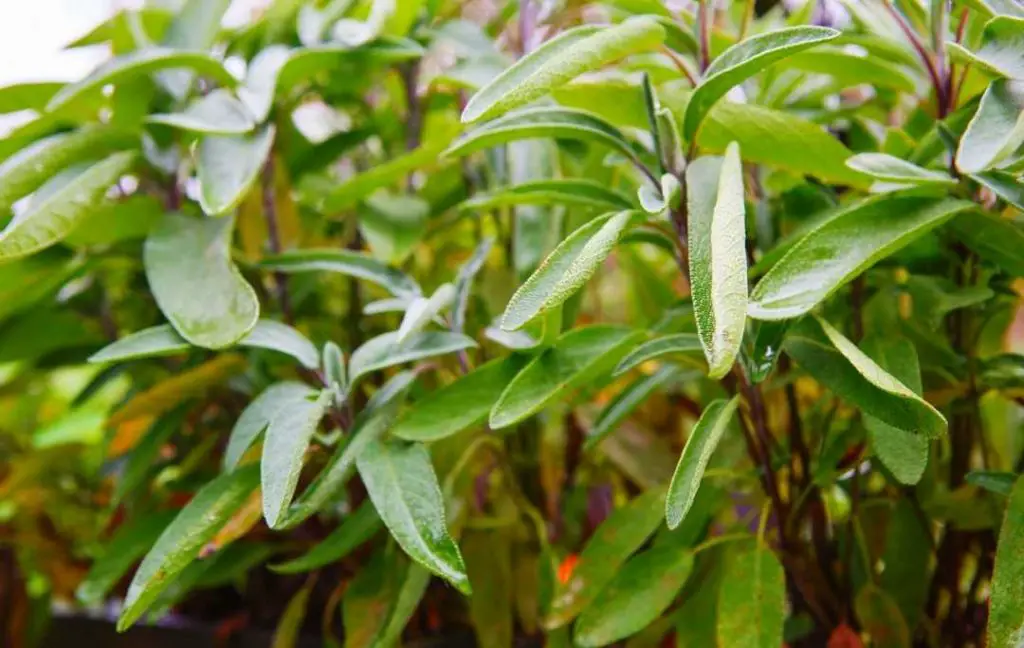
CAN GROCERY STORE BOUGHT SAGE BE GROWN?
You can propagate sage easily, propagating means producing a plant that is identical to its mother plant. It is not easy for some plants to propagate them but if we talk about sage, patience and care are the keys to getting your little sage bush at your home.
You can grow sage plants almost free when you use stems of sage that you bought from the store. You will find all the steps and instructions in this article and hope you will get all the relevant information in it.
TIPS BEFORE PLANTING GROCERY STORE SAGE
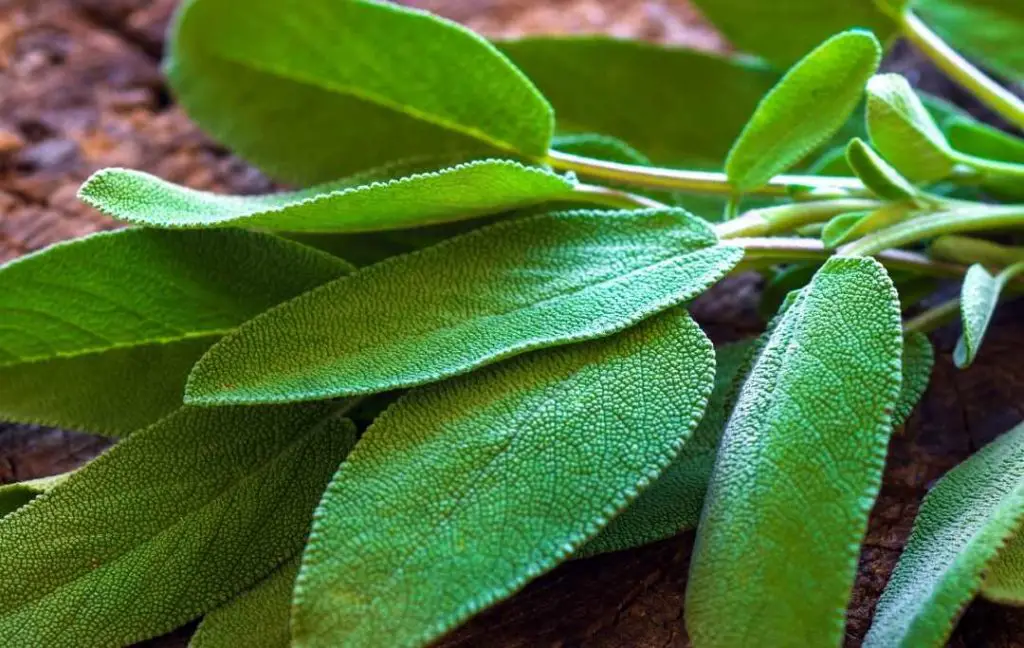
Planting a grocery store herb is just like giving second life to it. You have to follow a few steps for getting success in a garden. The tips and instructions help you to start growing herbs like thyme, rosemary, mint, and rosemary.
The herbs can grow in the soil as well as hydroponically but before planting them in the soil the following things are very important you should know.
1- SUPERMARKET SAGE SHOULD BE TRANSPLANTED SOON AFTER PURCHASE
If you want to increase the chances of surviving your sage, you should transplant it soon into the water and pot just after buying. In the grocery store, they are not getting water and organic food for growing.
The soil which you use for growing sage should be rich in nutrients and try to give them full sun exposure which helps them thrive.
2- SUPERMARKET SAGE ARE PLANTED INTENSIVELY
The sage which you buy from the grocery store is seeded thickly and grown close together. That’s why they compete for space, light, and moisture. This is the reason the roots of these Herbs become severely root-bound.
The solution to this problem is that you need to divide the first and take out from the pot and plant them straight in a large container or ground.
3- GROCERY STORE SAGE SHOULD BE DIVIDED BEFORE TRANSPLANTING
If you want to grow healthy sage then gently prod the root ball with the help of your hands, or you can also cut them with a clean pair of shears. Each transplant has two or three seedlings. If you see any weaker seedlings then remove them before planting.
4- THIN THE DIVISIONS ARE NEEDED
If you see tiny seedlings at the base of the stems then snip them off because these tiny seedlings will never be able to survive in the crowd of taller neighbors. Instead of throwing them, you can use them in your salad.
The other way of using them is to grow them in a glass of water so they will turn into new plants. When the seedlings grow a couple of inches long, then you can plant them in a container or a pot, or a raised bed.
POPULAR TYPES OF SAGE
Some sage plants are ornamental and some are edible and commonly used for culinary purposes.
COMMON GARDEN SAGE
The colors of flowers of this variety are red and purple. It is a dwarf shrub that is used for culinary use. This variety needs full sun and moist soil. These plants will become woody after 3-4 years so you should replace them because they will not produce aromatic leaves.
SCARLET SAGE
These perennial plants grow in cooler regions. In this variety, you will find different shades of flower such as pink, purple, white, orange, and blue.
ANNUAL SAGE
The flowers of this variety bloom from summer to fall. You can easily grow this variety from seeds. You can use the flowers in fresh-cut bouquets.
MEALY CUP SAGE
This is an evergreen variety and a prolific bloomer. You can use flowers for decoration purposes. Flowers are the center of attraction for butterflies and other pollinators. Moist soil is needed for the establishment of plants.
PITCHER SAGE
This perennial shrub grows in clumps with grey-green foliage. The color of the flowers is blue. There are only two petals on each bloom. Well, drained soil is needed for thriving.
AUTUMN SAGE
These evergreen plants grow in cooler climates. The colors of the flowers are purple, red, yellow, and pink. You can create beautiful borders and beds with these flowers. This variety can tolerate heat, humidity, and drought. These plants need well-drained and fertile soil.
MEXICAN BUSH SAGE
These evergreen perennial plants grow up to 4 to 6 feet tall. The color of the blooms is purple and white. The blooming period of this variety starts from midsummer to the first frost. They preferred to grow in full sun with moist soil.
WOODLAND SAGE
This variety can grow up to 2 feet. The attractive shady foliage of grey-green color has an aromatic fragrance. You can see the blooms in the late spring or the beginning of the summer. The flowers of this variety stay for several weeks. This variety needs well-drained soil with full sun.
THINGS YOU NEED FOR GROWING SAGE
The things you need for growing sage are as under
- The sage stems which you bought from the grocery store.
- A small pot, the size should be 3 inches, make sure the pot has drainage holes at the bottom.
- Rooting hormone
- High-quality potting mix
- A glass
Before starting, you should keep in your mind that growing sage needs patience because it could take a long time for harvesting. So it is not easy to get fresh sage early after planting.
Also Read
STEP BY STEP ON HOW TO PROPAGATE SAGE
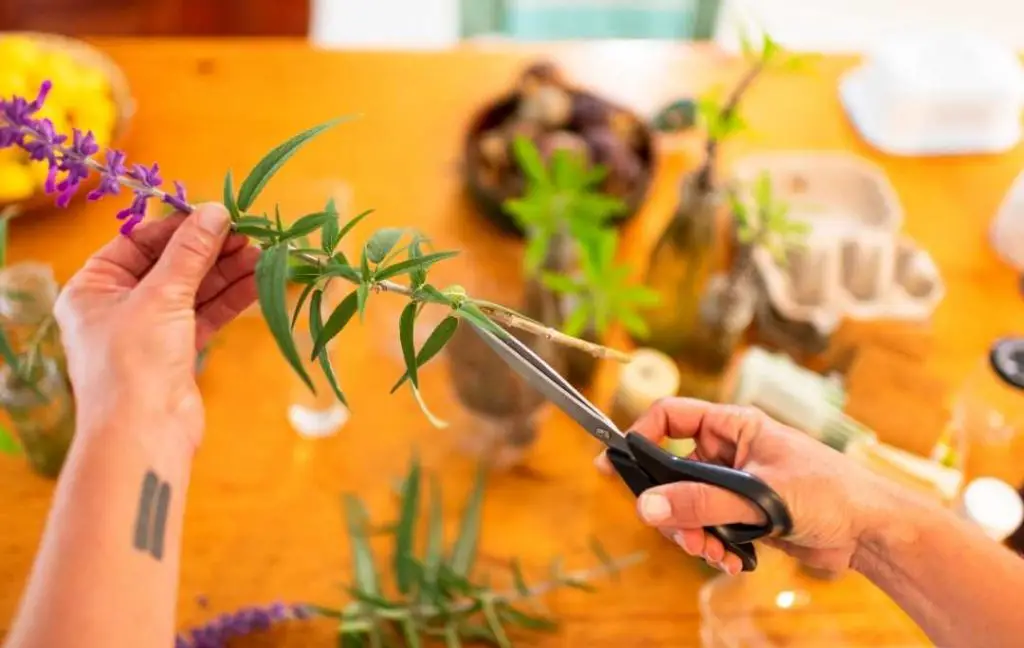
The question arises in your mind when to start a sage plant. The answer depends upon the place where you are living but it is best if you start sage in the fall.
Here we are going to discuss all the steps for propagating sage that you bought from a grocery store. Read carefully all the steps, it will help you a lot.
STEP 1: BOUGHT SAGE FROM STORE
The first step is buying sage from any grocery store. You need healthy and non-flowering sprigs of sage for this purpose because regrowing depends on the freshness of the stem which you choose.
Make sure your purchase has leaves and branches as the leaves would not regrow on their own. The best size of the sprigs is 4 to 6 inches.
STEP 2: STRIP LEAVES OFF FROM THE BOTTOM
You need a bare stem at the bottom so you should strip off the leaves at the lower part. This lower part is the base for future roots.
Now cut the tip of the sprigs at a 45-degree angle. This cut will give a fresh exposure to sprig for growing a new plant. You should also remove any part of the plant which is browning because this will prevent the stem from growing new roots.
STEP 3: DIP THE STEM INTO A GROWTH HORMONE
This step is optional but if you do it then it will faster the process of emerging of young roots.
For the growth of a faster and healthier root system, you can use powder or gel of rooting hormone which is easily available at the local garden center. Dip the tip in the hormone so your sage plant can start propagating.
STEP 4: START THE ROOT STRUCTURE
If you are using rooting hormone, you can plant the stems directly in the pot which is filled with potting mix. As the springs are little so planted them in a small pot because transplanting becomes easier.
If you are not using growth hormone then you can place sage stems in a glass of water. Place this glass on that spot that is not in contact with direct sunlight. Indirect sunlight is preferred for the growing process of stems.
You will get a root structure before planting stems in your desired spot. After 7 days you can see the old leaves turning yellow and new leaves are emerging.
On the lower part of the stem which is in the water, you can see the sign of root growth. The roots will extend themselves when time passes. At this stage remove damage and dried leaves.
But you should be careful during the removal process because small branches which are emerging are very delicate. You can use a sharp scissor for cutting all the damage and dried leaves
STEP 5: TRANSPLANT
Once the size of the roots is about 2-3 inches long then all the stems are ready to plant in the soil. The temperature of the soil in the pot must be 60 -70 degrees Fahrenheit.
You should wait for the exact time of transplanting the stems. Too early or too late, in both cases, your sage stems will not regrow. If you plant too early then the roots are not properly developed.
On the other hand, if you plant too late then the plant struggles to take off due to heat as sage is a cold lover herb.
CARE
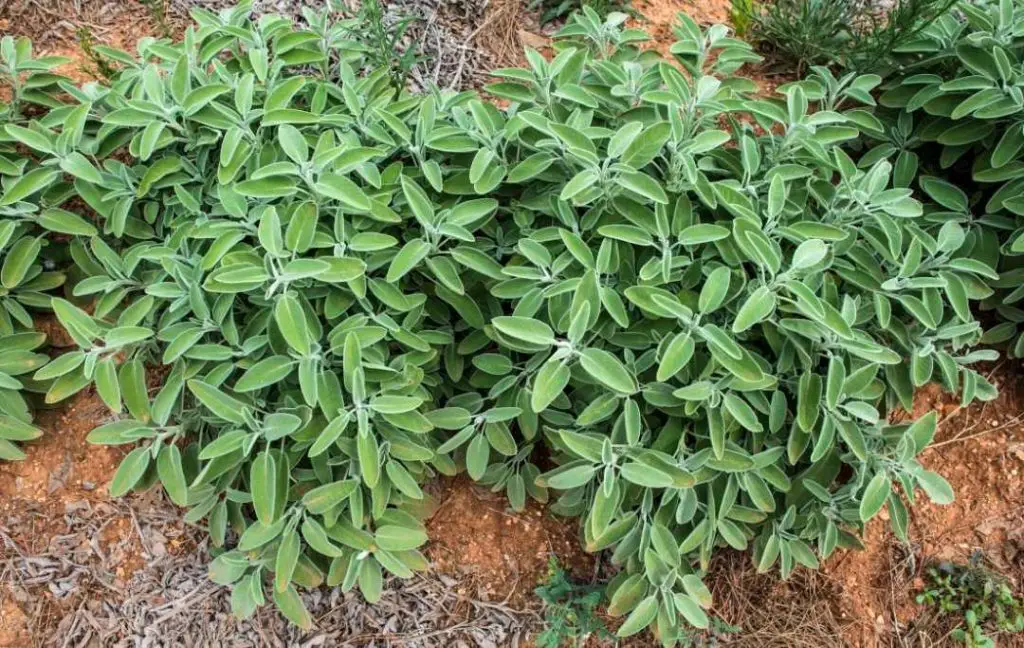
- Make sure the young plants get water regularly. They need water daily until they are fully grown. The consistent supply of water makes it possible for your plants to grow faster.
- If you see the leaves start turning yellow, it means it is the result of transplant shock. You have no choice but to remove the yellow leaves and wait for the new growth of leaves.
- Make sure your plants get full sun exposure.
- You should prune the heavier and woody stems in spring.
- For a productive plant, you should replace the plants every few years.
HOW TO HARVEST SAGE?
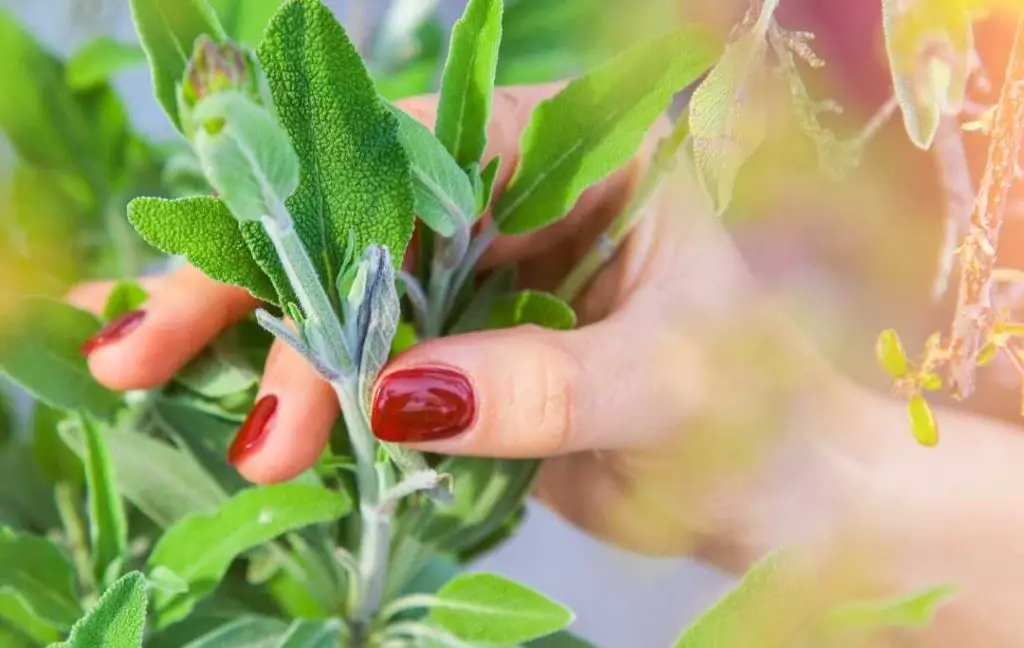
- For picking the leaves, pinch off leaves from the sage plant.
- During the first year, you should keep harvesting lighter so the plant will grow fully.
- You can harvest up to three times from an established plant.
- You should avoid harvesting in the fall so your plant can be prepared for winter.
HOW TO STORE SAGE?
- You can enjoy the best flavor of sage when you eat it fresh. But you can also use sage in frozen or dried form.
- If you want to sage leaves then hang sprigs in a shady and well-ventilated area. You should wait until the leaves crumble easily, now is the time to store leaves in tightly lidded jars.
- You can also freeze the sage. Freeze the leaves and then move the leaves into a zippered bag or a container.
Also Read
